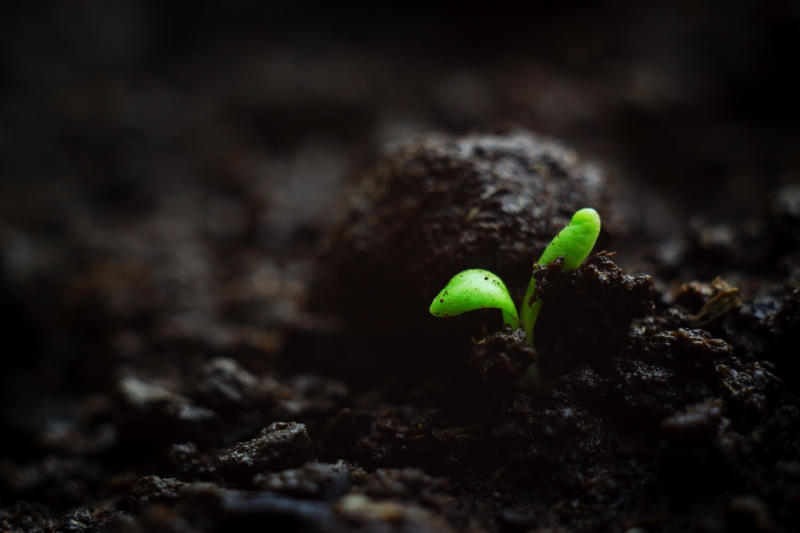Soil: Rains can work magic or wreak havoc

Rains can either work magic on crops or create problems with diseases and pests but this depends on the type of crops grown. While there are crops that adapt well to excess rains, there are those that don’t. Here are a few ways through which farmers can cope with the rains to produce crops.
Raised beds
Ensure good drainage by elevating your garden by planting in raised beds or mounds. This will prevent waterlogging which can affect the plant roots. Waterlogged soil inhibits exchange of oxygen and causes root rot. Growing in containers and use of vertical systems such as window boxes, wall mounted or railing planters, pots on ladders and plant stands which all drain well are also recommended.
Harvest the rain water or direct the water to areas where it can be used. Rather than wasting valuable rainwater in heavy downpours and paying for water when it’s dry, harvest it by redirecting the water to where you need it most. By making a trench, you can passively harvest water by slowing it down and allowing it to sit in a shallow trench to soak into the soil.
They are also useful for harvesting water for plants like bananas and fruit trees which can be planted on top of the mounds. If you have a natural low-lying area in your garden, collect the run-off and harvest water rather than letting it escape! Add a simple pond and plant or move water loving plants into that zone so their roots soak up the moisture.
Add organic matter to your soil
A good soil structure helps the excess moisture drain away. Adequate soil humus holds moisture like a sponge where the plants need it and is a buffer to plants under stress. It’s even more important to add organic matter like manures, leaves, grass clippings, compost and other mulches to heavy clay soils that become waterlogged easily and crack when dry. Adding gypsum to heavy compacted clay soils will help break them up.
Using a layer of mulch helps you take advantage of free rainwater as it helps retain vital moisture in the soil. Other benefits are that it also reduces splashing which encourages plant diseases and prevents soil erosion by providing a buffer.
Use slow release fertiliser
Feeding your soil with powdered organic fertilisers will help retain nutrients in your soil and replenish those lost to leaching during heavy rain. The more humus you have in your soil; the less leaching will occur as it helps bind minerals. A foliar spray of liquid seaweed is a good standby tonic to help plants bounce back quickly.
Heavy rains will rapidly leach nitrogen, potassium and some trace elements out the root zone. Waterlogged roots are not very efficient at taking up nutrients, so a foliar application is a quicker way of replacing nutrients in the plants until the root system is fully functional.
Nitrogen can be applied as urea, calcium nitrate or potassium nitrate which also applies potassium. There are several soluble products which will supply a range of major nutrients and trace elements in one spray. Whilst these products often do not apply much of any individual nutrient they are useful for ‘kick starting’ a waterlogged crop.
Harvest regularly
Pick edible plants promptly in humid wet weather because the longer the produce stays on the vine or stalk, the higher the likelihood of spoilage, pest attack or disease.
[email protected]
Want to get latest farming tips and videos?
Join Us
Share this article on social
 The Standard Group Plc is a multi-media organization
with investments in media platforms spanning newspaper print operations,
television, radio broadcasting, digital and online services. The Standard Group
is recognized as a leading multi-media house in Kenya with a key influence in
matters of national and international interest.
The Standard Group Plc is a multi-media organization
with investments in media platforms spanning newspaper print operations,
television, radio broadcasting, digital and online services. The Standard Group
is recognized as a leading multi-media house in Kenya with a key influence in
matters of national and international interest.
 The Standard Group Plc is a multi-media organization
with investments in media platforms spanning newspaper print operations,
television, radio broadcasting, digital and online services. The Standard Group
is recognized as a leading multi-media house in Kenya with a key influence in
matters of national and international interest.
The Standard Group Plc is a multi-media organization
with investments in media platforms spanning newspaper print operations,
television, radio broadcasting, digital and online services. The Standard Group
is recognized as a leading multi-media house in Kenya with a key influence in
matters of national and international interest.







